People have long treasured the Kailash Mansarovar Yatra, often known as the pilgrimage to Kailash Mansarovar. Thousands of people travel this path each year in search of their deity's blessings and personal tranquility. The journey in this isolated and enigmatic location is a physically demanding task that offers a profoundly transforming spiritual experience. It is believed by pilgrims that traveling around Mount Kailash and bathing in the holy waters of Mansarovar can cleanse their sins, provide them spiritual merits, and ultimately open the path to their spiritual liberation.
Mount Kailash and Lake Mansarovar hold great spiritual significance in Hinduism, Buddhism, Jainism, and Bon religion. Kailash Mansarovar, one of the holiest places to stand on Earth, is a symbol of spiritual energy and great religious significance. In Hinduism, Mount Kailash is considered the sacred abode of Lord Shiva, while Lake Mansarovar is believed to be created by Lord Brahma. Similarly, others also have their importance and sanctity according to their own religions.
Because the journey to Kailash Mansarovar demands a combination of physical endurance and well-thought-out planning, this “How to Reach Kailash Mansarovar” guide is there to assist you in every activity related to this yatra. From information regarding the trekking routes and means of transport for the journey to the spiritual meaning of the journey and essential preparation guides, this blog will give you a full load of information you will need to commence this lifetime journey. Regardless of the reason one is attracted to this site, Kailash Mansarovar remains a journey that promises to turn many lives around.
Kailash Mansarovar Yatra Facts
Given is the fact related to Kailash Mansarovar Yatra:
|
Journey |
Kailash Mansarovar Yatra |
|
Trip Duration |
Minimum: 10 Days Maximum: 17 Days |
|
Major Attractions |
Mount Kailash (6638 m) Lake Mansarovar (4600 m) Kyirong Town (2850 m) Yama Dwar (4750 m) |
|
Average Elevation |
4000 m |
|
Maximum Elevation |
5600 m (Dolma la Pass) |
|
Difficulty |
Strenuous |
|
Starting Point |
Kathmandu, Nepal |
|
Ending Point |
Kathmandu, Nepal |
Geography Around Kailash
Mount Kailash sits at the heart of Tibet with its dominating height of 6,638 meters. Unlike other Himalayan peaks, Mount Kailash is a uniquely shaped peak with 4 different faces facing the cardinal directions (north, south, east, and west). The mountain peak remains snow-clad all year round and is tempting due to its symmetry and isolation from other neighboring peaks. Lake Mansarovar, located southeast of Mount Kailash, is one of the world's highest freshwater lakes, at an elevation of about 4600 meters. Spreading over an area of about 320 sq km, the lake has a maximum depth of 90 meters. The waters of Lake Mansarovar are fed by the glaciers of Mount Kailash and other nearby mountains, and the water remains crystal clear, proclaiming the pure environment enveloping the lake. The climate of this terrain is harsh, and therefore, at high altitudes, there is thin air, cool weather, and barren terrain. Nevertheless, this speculated beauty strikes a deep chord with the psyche of pilgrims and trekkers, its spiritual and aesthetic beauty.

A vast Tibetan Plateau constitutes this area, characterized by dry conditions and an average height. Even yatras leading to Kailash Mansarovar navigate through this entire difficult geography through many paths from Nepal. High mountain passes crossing, such as the Dolma La Pass (5600 m), is common during the physically grueling Kailash Parikrama (Kora), a 52-kilometer circumambulation of the holy mountain. The climate is normally cold and dry with great temperature variations. Summers are milder but winters are very severe. The geography being unique and rugged in Kailash Mansarovar creates a pilgrimage experience quite different from the normal travel kind, thus blending the pilgrimage encounter with endurance when converted into awe-inspiring splendor.
Kailash Mansarovar Yatra Significance
The significance of Kailash Mansarovar in the religious traditions of Hinduism, Buddhism, Jainism, and Bon is such that all four consider this place with utmost sanctity.
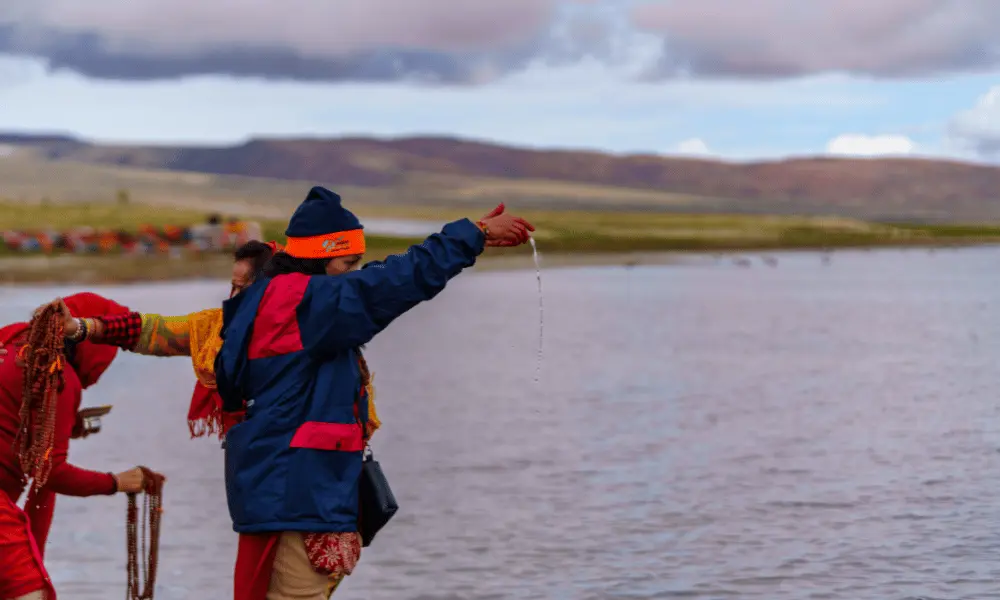
- Hinduism: Mount Kailash is the abode of Lord Shiva, referred to as one of the most revered deities in the Hindu religion. Generally, Lord Shiva is depicted at the summit of the mountain, deep in meditation. The holy Lake Mansarovar, meanwhile, is thought to be created from Lord Brahma’s mind, and an individual washes himself in the water to cleanse his sins and enlighten the soul. Parikrama, or kora, is the circumambulation of Mount Kailash by thousands of pilgrims every year regardless of all challenges.
- Buddhism: The Buddhists believe Mount Kailash is home to Demchok (meaning Chakrasamvara), a fierce god of the utmost bliss. Besides all this, the mountain is also part of the great cosmic mandalas, said to represent the four dhatus or elements – earth, water, fire, and air – by its four faces. Mapham Yutso is the name given by Tibetans to Mansarovar Lake, where it is also thought to be a fountain of spiritual energy and a mental retreat. Additionally, the lake is regarded as the spiritual lake Anotatta, where Queen Maya Devi cleansed herself before conceiving Siddharth Gautam, who later became Gautam Buddha. Pilgrims do kora around Mount Kailash, which means a ritual of circumambulation around the mountain to collect meritorious deeds and purify negative karma.
- Jainism: Mount Kailash is revered in Jainism as Ashtapada because it is the place where Rishabhadeva, the first Tirthankara and founder of Jainism, earned liberation (moksha). For Jains, Mount Kailash is thus the purest symbol of being liberated spiritually, and they revere it as one of the most sacred places in their tradition.
- Bon: The old Bon religion of Tibet existed before the coming of Buddhism and is also highly associated with Mount Kailash. Bonpos refer to this mountain as the holy nine-storied Swastika mountain, the axis mundi or center of the universe. To encircle Kailash is to travel in the path of spiritual enlightenment.
Mansarovar Lake is as sacred as the mountain in these religions. Its waters are lifesaving and pure. It can cure physical ailments as well as those of the spirit. The belief is that the waters constitute the source for many of the great rivers that travel across Asia: Indus, Sutlej, Brahmaputra, and Karnali rivers. Clearly, this shows how significant this lake is as a life-giving force.
Major Routes from Nepal
Nepal, being the most accessible gateway for Kailash Mansarovar pilgrims, has many routes represented by breathtaking Himalayan views and great spiritual significance. Nepal offers both the land route and the air route to get to this region. These routes allow various cultures to unfold during journeys from remote mountain villages and ancient monasteries to the sacred grounds of Mount Kailash and Lake Mansarovar in Tibet.
By Helicopter to Hilsa and Land Route
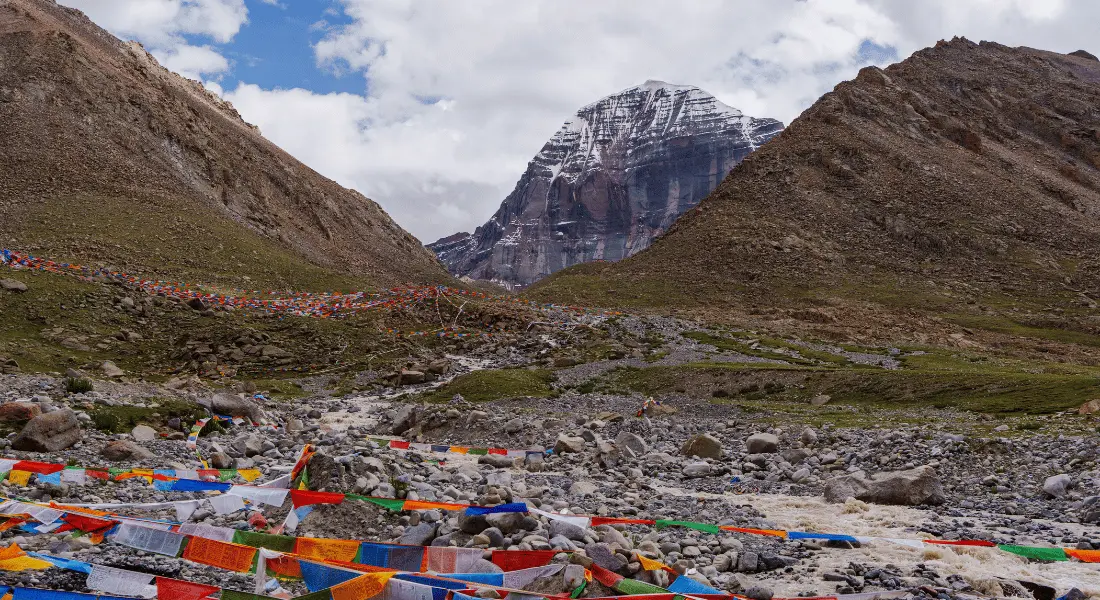
The Kailash Mansarovar Yatra is a comfortable and quick trip taken by helicopter and land route. Pilgrims would take a flight from Kathmandu to Nepalgunj and to Simikot, then take a quick helicopter ride to Hilsa, which is located near the Nepal-Tibet border. They would then continue their trip overland to Mount Kailash and Lake Mansarovar for the sacred Parikrama. For those looking to travel on a pilgrimage, this route is ideal because it blends picturesque driving with flying, making it a shorter but still worthwhile journey.
|
Leg |
Distance |
|
Kathmandu to Nepalgunj (Flight) |
366 km |
|
Nepalgunj to Simikot (Flight) |
216 km |
|
Simikot to Hilsa (Heli) |
52 km |
|
Hilsa to Taklakot |
27 km |
|
Taklakot to Mansarovar |
81 km |
|
Mansarovar to Yam Dwar |
43 km |
|
Kailash Kora (3 days Trekking) |
Approx. 52 km |
|
Darchen to Hilsa |
143 km |
|
Hilsa to Simikot (Heli) |
52 km |
|
Simikot to Nepalgunj to Kathmandu (Flight) |
582 km |
Related Package: Kailash Mansarovar Yatra by Helicopter
By Land via Kyirong Border Route
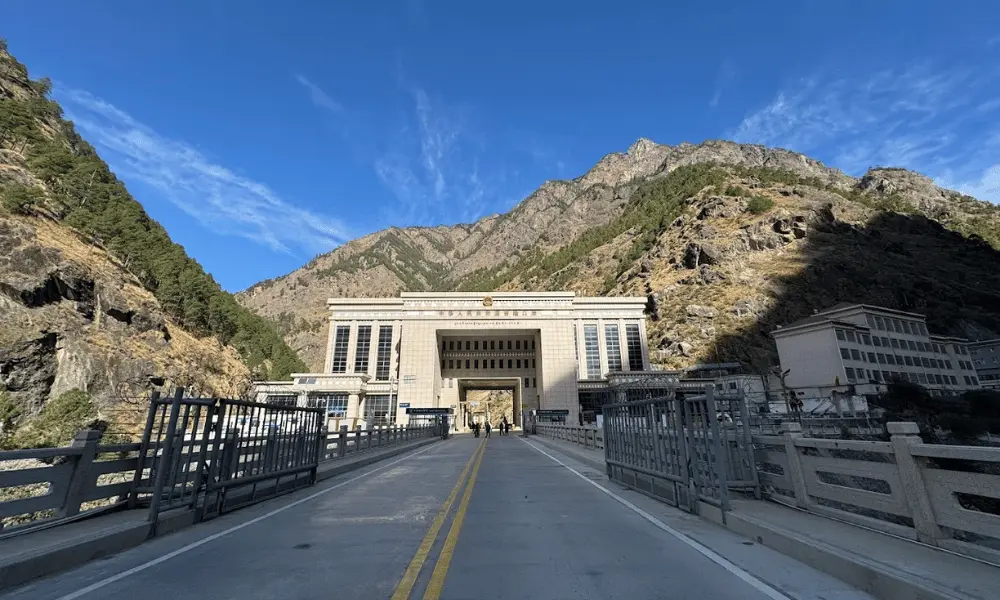
The road journey to Kailash Mansarovar has been followed for ages and is still the most popular route. This route is preferably taken by individuals who have a desire to witness the gradual change in geography and culture along the way. It begins in Kathmandu and takes each pilgrim across the different terrains of Nepal to the border at Kyirong. Crossing the border, the journey continues along the Tibetan plateau to Mansarovar Lake and Mount Kailash.
|
Leg |
Distance |
|
Kathmandu to Dhunche/Syabrubesi/Timure |
117 km - 124 km |
|
Timure to Kyirong |
43.1 km |
|
Kyirong to Saga |
155 km |
|
Saga to Mansarovar |
450 km |
|
Mansarovar to Darchen |
35 km |
|
Darchen to Yam Dwar |
8 km |
|
Kailash Kora (3 days Trekking) |
Approx. 52 km |
|
Darchen to Saga |
485 km |
|
Saga to Kyirong |
155 km |
|
Kyirong to Kathmandu |
167.1 km |
Related Package: Kailash Mansarovar Yatra by Drive via Kyirong
By Flight to Lhasa and Drive Route
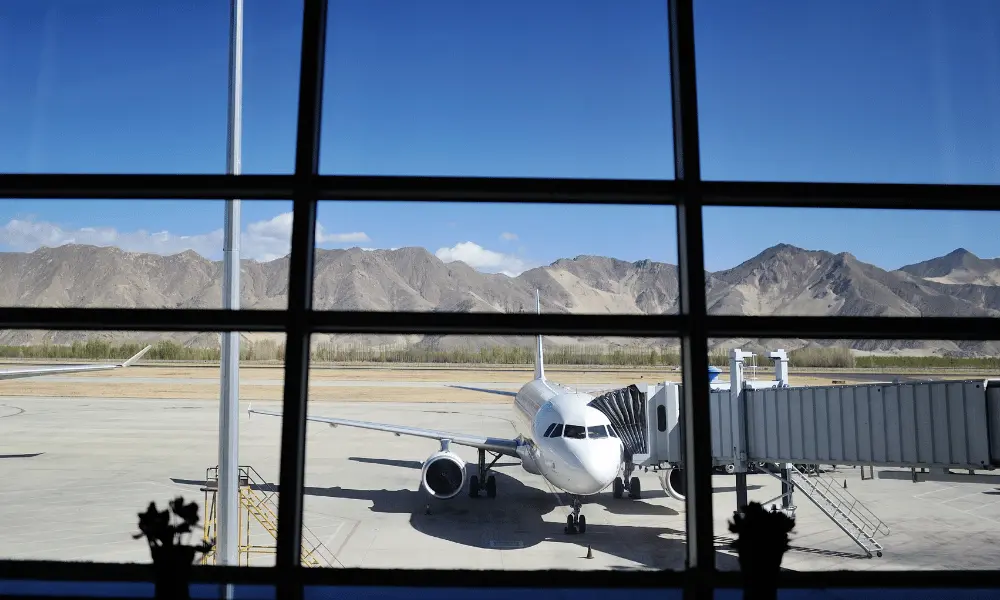
It starts with a flight from Kathmandu to Lhasa, the capital of Tibet. There will be sightseeing in Lhasa and acclimatization and a drive across Tibet's towns of Shigatse and Saga to Lake Mansarovar and Mount Kailash. Finally, the pilgrims will perform the sacred Parikrama (circumambulation) of Mount Kailash. This route provides an excellent opportunity for a smooth transition between air travel and scenic road journeys, suitable for those wishing to pursue deeper spiritual meaning in comfort.
|
Leg |
Distance |
|
Kathmandu to Lhasa (Flight) |
517 km |
|
Lhasa to Shigatse |
359 km |
|
Shigatse to Tingri |
238 km |
|
Tingri to Saga |
295 km |
|
Saga to Mansarovar |
450 km |
|
Mansarovar to Yam Dwar |
43 km |
|
Kailash Kora (3 days Trekking) |
Approx. 52 km |
|
Zuthulpuk to Darchen |
4 km |
|
Darchen to Kyriong |
635 km |
|
Kyirong to Kathmandu |
167 km |
Related Package: Kailash Mansarovar Yatra by Flight via Lhasa
Kailash Yatra Alternate Routes from Nepal
Apart from the main popular routes from where the Kailash Yatra is taken, there are also some alternate routes that can be used in case of emergency situations like landslide, floods that disrupt the main route. The alternate routes are:
Kodari (Tatopani) border
Kodari is a border town in Nepal's Sindhupalchowk District, forming a border with Zhangmu across the Friendship Bridge in Tibet. The other side of the route from Kathmandu (Nepal) goes to Tibet (Zhangmu/Nyalam), across the Araniko Highway. From Zhangmu/Nyalam, pilgrims may proceed towards the Kailash Mansarovar region.
Korala (Mustang) border
Korala (or Kora La) is a mountain pass at the northernmost tip of Mustang District in Nepal, bordering China's Tibet Autonomous Region. It lies in the Trans-Himalayan region of Nepal, an ancient salt trade route historically. Foreign travellers must obtain a restricted area permit costing about USD 500 to use this route.
Note: These routes are only available to use in case of emergency and should be authorized by the chinese government to use them for Kailash Yatra.
Major Routes From India via Nepal
Pilgrims from India can undertake this spiritual journey through multiple routes, primarily organized either by the Government of India or via private tour operators. Pilgrims choosing to travel via Nepal might enter Nepal via Lucknow or directly from Delhi to Kathmandu and take various routes to Tibet for the Yatra like Kyirong, Simikot or Lhasa.
Kailash Mansarovar Yatra via Lucknow
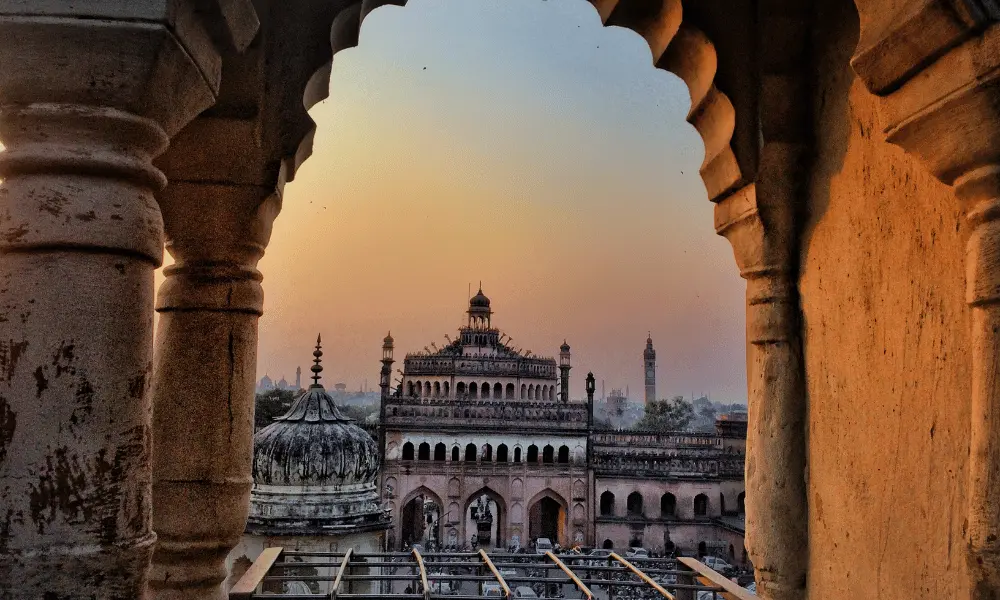
The Kailash Mansarovar Yatra by helicopter from Lucknow gives a quick and comfortable 10-day experience of Mount Kailash and Lake Mansarovar for Indian pilgrims. The tour starts with a flight from Lucknow to Nepalgunj, from there to Simikot, and finally by helicopter to Hilsa to fasten and facilitate travel. This specially designed package provides the most ease for pilgrims to experience the sacred sites and is for travelers seeking both spiritual fulfilment and a modern approach.
|
Leg |
Distance |
|
Lucknow to Nepalgunj |
209 km |
|
Nepalgunj to Simikot |
216 km |
|
Simikot to Hilsa |
52 km |
|
Hilsa to Taklakot |
26 km |
|
Taklakot to Mansarovar |
80 km |
|
Mansarovar to Yam Dwar |
43 km |
|
Kailash Kora (3 days Trekking) |
Approx. 52 km |
|
Zuthulpuk to Darchen to Hilsa |
58 km |
|
Hilsa to Simikot |
52 km |
|
Simikot to Nepalgunj to Lucknow |
216 km- fly 209 km- drive |
Related Package: Kailash Mansarovar Yatra by Helicopter from Lucknow
Kailash Mansarovar Yatra via Delhi
Located in the remote and sacred area of Tibet, the holy site of Kailash Mansarovar is a popular destination for spiritual seekers. The two primary routes for making the holy pilgrimage from Delhi to this location are via plane or road. Each can be chosen based on personal experience and preferences for time travel.
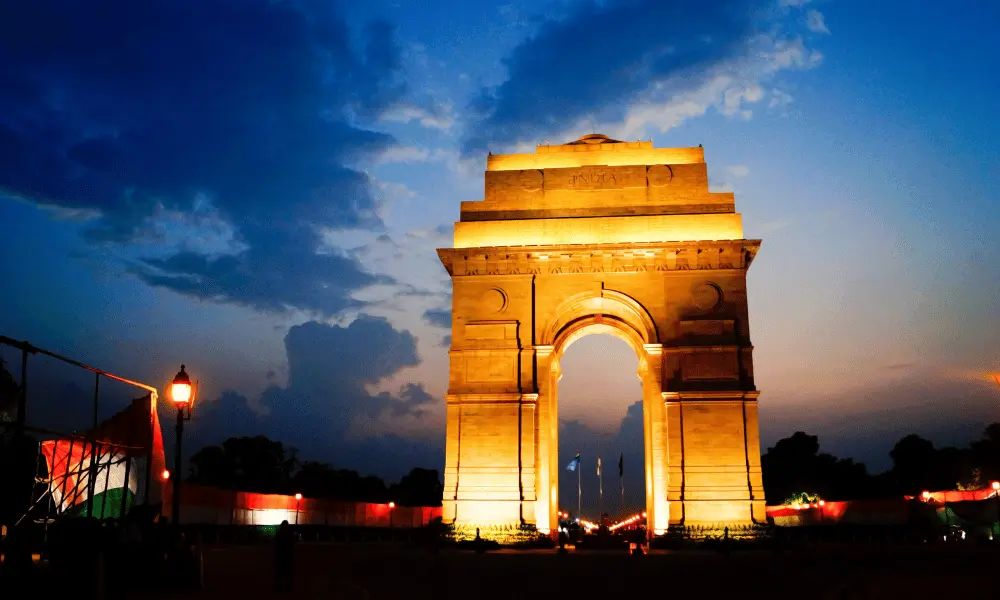
By Road
Road travel from Delhi to Kailash Mansarovar is actually a journey in and of itself, combining the steady rise to heights with the adventure of overland travel. Here, one needs to arrive in Kathmandu first. Imagine being immersed in the Himalayan realm and witnessing the breathtaking natural splendor of Tibet and Nepal. The routes typically include long, bumpy rides through isolated areas before arriving at the base of the revered Mount Kailash, where pilgrims would then hike around it. It is ideal for those who like to take in the vibrant pilgrimage experience along with the stunning scenery of the path.
For Air
Flying to Kailash Mansarovar is the quickest and most pleasant method, as it includes flying in and out a number of times and shorter and comfortable drives to reach. After taking a flight from Delhi to Kathmandu, pilgrims can continue on to the Tibet border via a number of connecting flights and helicopter trips. Once in Tibet, one can trek around Mount Kailash, the highest of the holy mountains, and explore Lake Mansarovar. For people who are pressed for time but yet need comfort and efficiency on their trip, this route is ideal.
Yatra Prerequisites
Well, many would love to set foot at Kailash Mansarovar but don't know what is essential for this holy journey, like the documents required for the yatra, health and fitness requirements like pre-packing essentials, etc. The pilgrimage to Kailash Mansarovar is a tough journey for one's spirit and body and demands very thorough preparation. In religious destinations or otherwise, adventuring to that holy peak Mount Kailash and the beautiful Lake Mansarovar requires serious attention in every aspect for planning. Here are some yatra prerequisites:
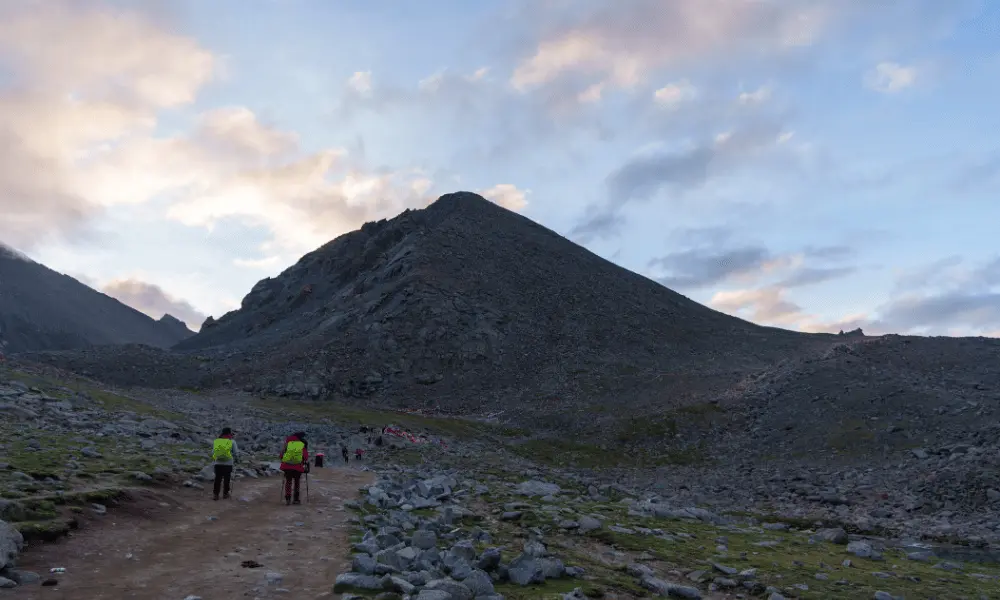
Documents
The Kailash Mansarovar Yatra deserves a good deal of management in documentation since this yatra passes through several international borders and entails travel through delicate terrain with strict governmental regulations. For the entry of pilgrims into the yatra, some documents are a prerequisite for the issuance of the necessary permits. Below is the list of required documents for your sacred journey to Kailash Mansarovar:
|
Required Documents |
|
Passport and Some Photocopies |
|
Recent Photograph (White Background) |
|
Nepal Visa (Besides Indian Citizen) |
|
Chinese Visa |
|
Tibet Travel Permit |
Packing List
Packing for the Kailash Mansarovar Yatra is perhaps the most significant part of the preparation since it introduces pilgrims to tough terrains – temperate, heavy rain, hot, or even icy draining paths. An excellent list of what to pack will assure the pilgrims of a time in overcoming and coping with tremendous physical discomforts as well as staying fairly comfortable throughout the pilgrimage. Some of the things you need to pack to go to Kailash Mansarovar Yatra are listed below:
|
Clothing |
Essential |
Additional |
|
Down Jacket |
Sunscreen |
Small first aid kit |
|
Warm Pants |
Moisturiser |
Trekking Poles |
|
Long Sleeved Shirt |
Wet Tissues |
Sunglasses |
|
Fleece Jackets |
Toilet Paper |
Camera and Batteries |
|
Woollen Socks |
Dust Mask |
Headlight |
|
Thermals |
Sanitizer |
Powerbank |
|
Waterproof Gloves |
Towel |
Snacks |
|
Comfortable Inners |
Dental Kit |
Personal Water Bottle |
|
Rain Jacket |
Documents (Passport, Permits, Visa) and Cash |
Worship Elements |
Learn More: Kailash Mansarovar Yatra Packing List
Health and Fitness (Both Physical and Mental)
Going to Kailash Mansarovar is both a strenuous test of a pilgrimage and great physical endurance. They take pilgrims to more than 15,000 feet above sea level, where air becomes thin and the weather becomes too stringent. One needs to prepare the body and the mind for such a journey in order to make it safe and rewarding.
- Physical Fitness: Months before the journey, pilgrims need to prepare their muscles and mental exercise by starting a regular exercise routine that has to focus on cardio endurance, strength, and flexibility. Activities such as walking, jogging, swimming, and cycling improve stamina. And squats and lunges are exercises that target the legs; they're beneficial for going on uphill terrain.
- Pre Health Checks: The health status needs to be consulted with the doctor by pilgrims to avoid any unfortunate situations during their journey. All the traveling people are advised to consult their doctors before they finalize their travel to Kailash Mansarovar. Pre-health checkups can lessen the possible hazards that can happen during the yatra.
- Altitude Acclimatization: The first and foremost indispensable step in high-altitude travel to avoid altitude sickness is acclimatization. The body can adjust to lower oxygen levels by spending some days at intermediate altitudes like Kyrong and Saga just before getting into Kailash Mansarovar. Some pilgrims may consider taking preventive altitude sickness medications, which must be taken under medical supervision.
- Nutrition and Diet: A well-balanced diet rich in proteins, vitamins, and minerals is required to build strength and immunity for the journey. Equally important, hydration is necessary so that pilgrims will drink more water days before the yatra to maintain optimum levels of hydration during the trek.
- Mental Preparation: There's as much mental as physical strain in the yatra. The reclusiveness, fierce shoes of weather, and rigorous trek all take their toll on mental health. Practicing mindfulness, meditation, or yoga can assist people in developing the mental toughness needed to cope with stress while enhancing the spiritual experience from a pilgrimage.
- Medical Supplies: Pilgrims should bring a private medical kit containing essential first-aid items, painkillers, antiseptic cream, and altitude sickness medication. Personal prescriptions and over-the-counter medicines for common problems such as colds, headaches, or digestive problems should also be included.
Related Read: Kailash Mansarovar Yatra Preparation
Kailash Kora Routes
Visitors from all around the globe come forward for the Kora, a ritual circuit around the holy mountain that widely provides liberation and self-realization. There are two roads: the Inner Kora, which is less used, more difficult to get to, and requires more physical exertion to finish, and the Outer Kora, which is the one that pilgrims use the most. Every journey has symbolic significance. It all comes down to faith; those who take it seriously will experience recovery.
Kailash Outer Kora
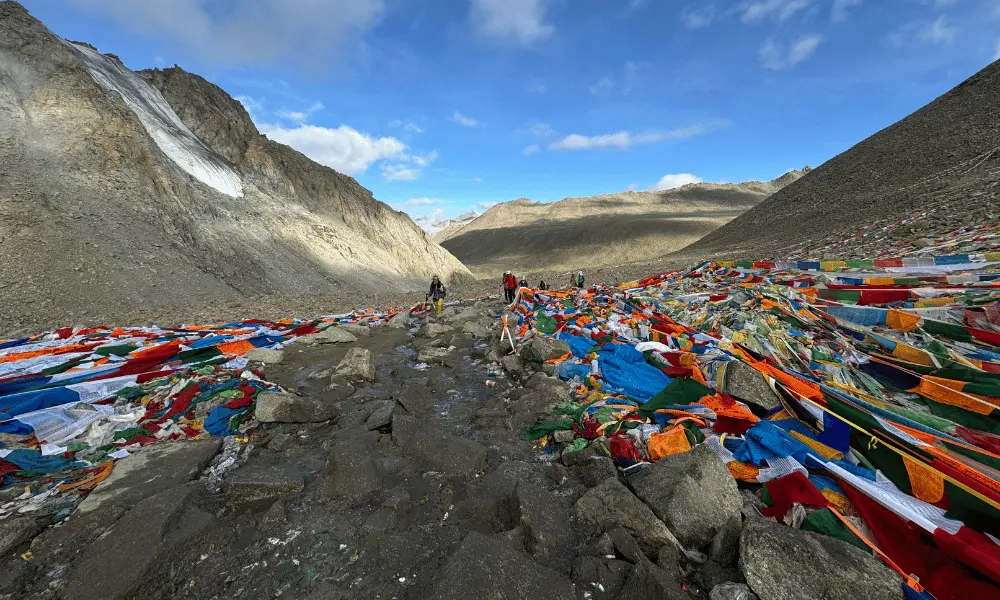
The Outer Kora is a pilgrimage around Mount Kailash which is about 52 km long. This revered circuit takes 3 days and is initiated at Darchen, a base camp town. The pilgrim walks over rugged terrains and high-altitude passes such as the Dolma La (5,600 meters) as well as spiritually significant places such as Dirapuk and Zutulpuk monasteries. This entire trek becomes a physical challenge due to scarce air and steep paths but is regarded as a spiritual experience believed to wash away sins and karmic debts collected in numerous lifetimes.
|
Leg |
Distance |
|
Yama Dwar to Derapuk |
12 km |
|
Deraphuk to Zuthulpuk |
22 km |
|
Zuthulpuk to Darchen |
8 km |
Kailash Inner Kora
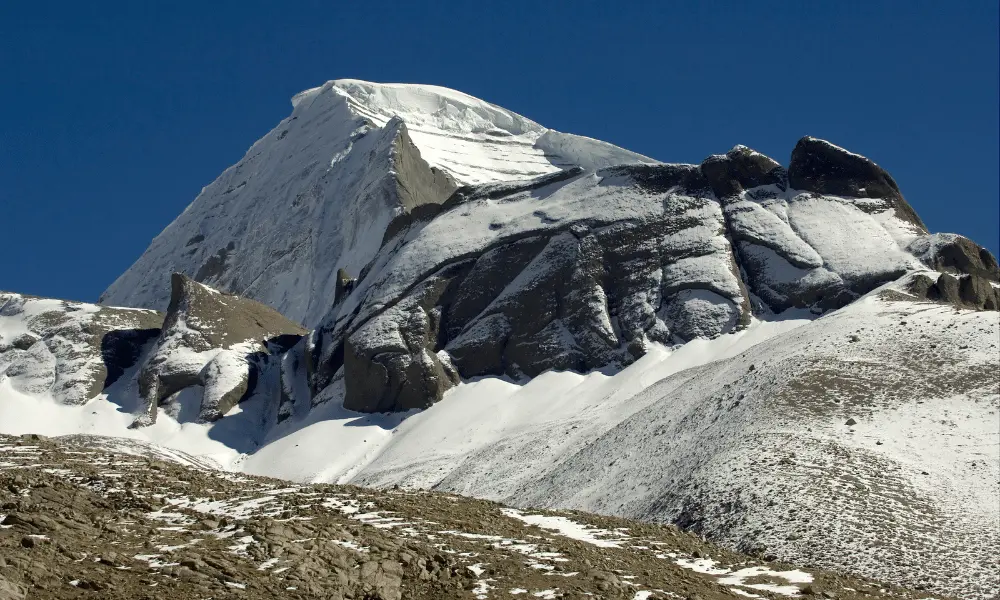
The Inner Kora is a riskier and seldom-taken circuit that is available only for truly devoted pilgrims with proper acclimatization and spiritual preparation. The Inner Kora is concerned with the circumambulation of the mountain at an immediate distance by entering more secluded and sacred grounds, such as the Charan Sparsh, in which one touches the feet of the mountains. It is said to provide deeper spiritual clarity and a release into the spiritual plane of moksha; however, the entry is often extinguished by reasons like religious sensitivity and the extremity of the routing, which requires special permission and guidance from local authorities or lamas.
|
Leg |
Distance |
|
Darchen to Ashtapad, Saptarishi Cave and 13 Golden Chortens and back to Darchen |
Approx. 15 km |
|
Darchen to Deraphuk via Yama Dwar |
12 km |
|
Deraphuk to Charan Sparsh Return to Deraphuk |
14 km |
|
Deraphuk to Zuthulpuk via Sanglam La Pass |
16 km |
Best Time to Visit
The best time to visit Kailash Mansarovar is between May and mid-September, when the weather remains relatively mild and the service is more accessible. The temperature is at its high during this period, hovering around 5 to 15 Celsius, making it perfectly pleasant for trekking and high-altitude travel. The months of June and August are especially liked for having clearer skies with no or very little snowfall, making Mount Kailash and Lake Mansarovar very easily visible along the routes. Many of the trails generally remain safe and open to access, and there are some stunning areas of nature with meadows and mountain views at their peak.
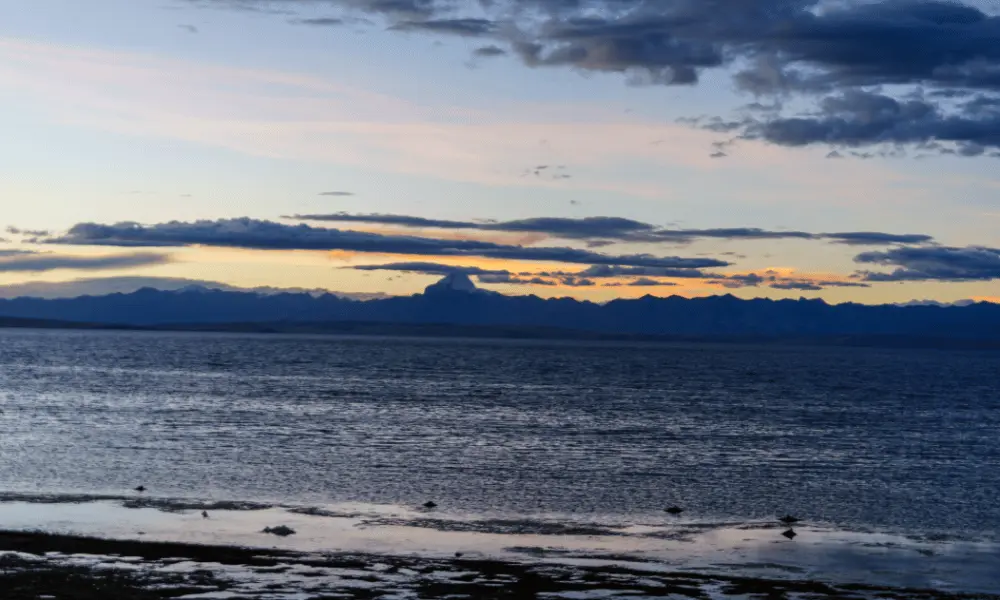
While the occasional monsoonal showers can be expected in the month of July, the journey can still be continued, and most pilgrims do travel to it during these months, especially during the Saga Dawa, which is a very important religious event for Tibetan Buddhists. With the drop of temperature after mid-September, there occurs frequent snowfall, and the road becomes inaccessible and often closed. Hence, the months between May and September are the best time to plan a pilgrimage or spiritual journey for a safer and spiritually fulfiling experience.
|
Season |
Temperature |
Features |
|
Winter (Late October to Early March) |
Daytime: 0°C to -15°C Nighttime: Can plummet to -20°C or even lower |
|
|
Spring (March to May) |
Daytime: 5°C to 15°C Nighttime: -10°C or even lower |
|
|
Summer (June to August) |
Daytime: Around 15 °C Nighttime: Around 0°C |
|
|
Autumn (September to early October) |
Daytime: 0°C to 10°C Nighttime: Below 0°C |
|
Learn More: Best time to visit Kailash Mansarovar
Conclusion
The journey to Kailash Mansarovar is not all about reaching the holy place but involves crossing all terrains and heights, acclimatization to the highest altitude, and even travelling through the remote routes. Road or air – the two ways, each road takes their own logistics plus physical challenges requiring proper planning and preparation. The journey does not merely confine itself geographically; rather, it becomes an intellectual journey and testifies to the endurance and faith of individuals.
All this effort pays off. What other experiences could compare to the sensation of being surrounded by the spiritual energy of Mount Kailash, the serene serenity of Lake Mansarovar, and the stunning vista of the Himalayas? In terms of satisfaction, it is nearly impossible to experience what a visit offers. This detail, together with familiarizing oneself with the routes, preparing sufficiently to deal with altitude sickness and physical endurance and showing consideration for the environment and local culture, may transform this difficult journey into an unforgettable memory.
Frequently Asked Questions (FAQs)
Here are some frequently asked questions related to the Kailash Mansarovar Yatra:
How long does the journey take?
The trip duration depends on the chosen route. Usually, the helicopter route across Nepal takes from 10 to 14 days, overland via Kyirong takes around 14 to 17 days and the route via Lhasa takes around 17 days.
How difficult is the Kailash Mansarovar Yatra?
The Kailash Mansarovar Yatra is generally regarded as an extremely physically and mentally taxing pilgrimage due to the elevation exceeding 5000 meters, the harsh weather, which includes strong winds and freezing temperatures, and the rough terrain, particularly the 52-kilometer Parikrama along Mount Kailash. Because of the logistical difficulties posed by the isolated location with limited amenities, careful planning and physical health are the most fundamental prerequisites for the yatra.
Are there options for those who cannot take the full Kora?
Yes, shorter hikes or viewing Mount Kailash from a few easily accessible locations are options for pilgrims who are physically unable to complete the whole Kora. The north face of Kailash may be seen well from the Deraphuk monastery. They can also wait for the group to finish the yatra at Darchen.

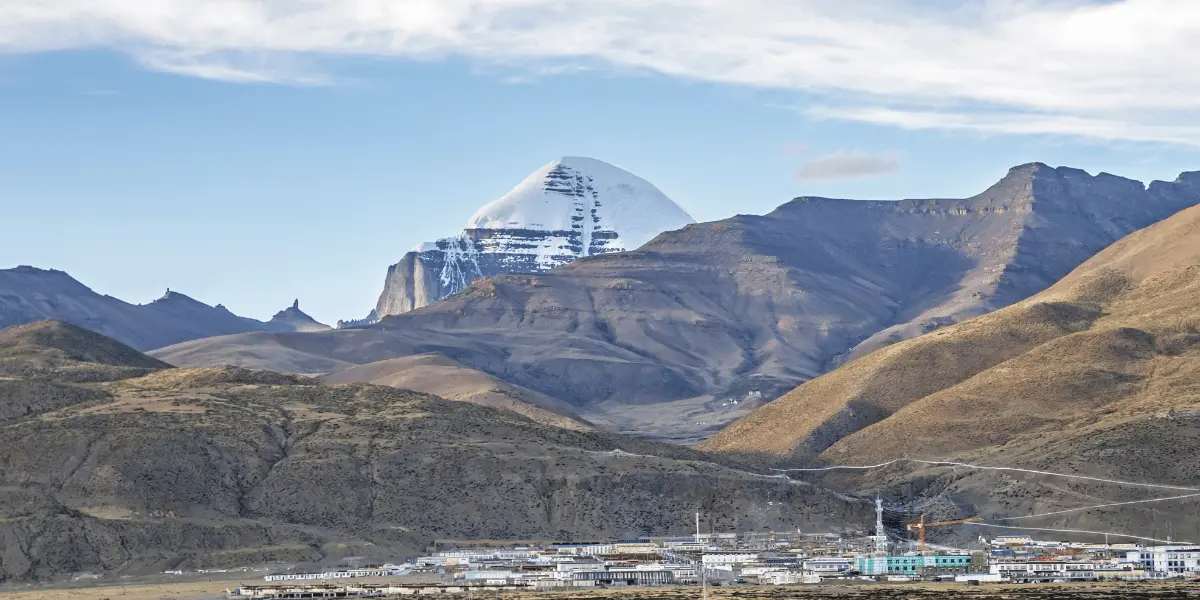
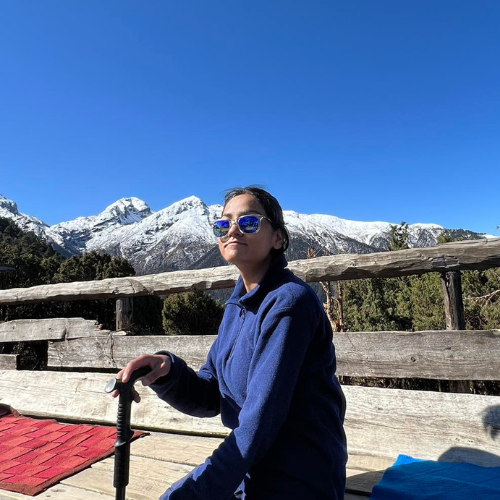 Mandira Itani
Mandira Itani